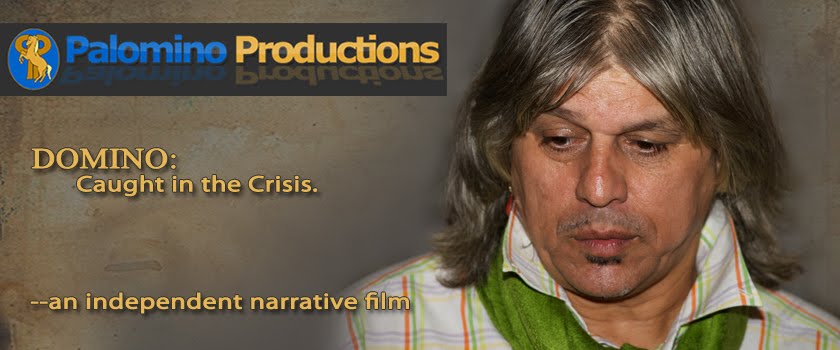On two continents, movements have sprung up expressing people's frustration with the economic crisis, their belief that it has been caused by banks and other financial institutions, and their desire to have the political (and perhaps, social) system undergo fundamental change. The first of these started in Spain, in May of this year, and is called the Movimiento 15-M (or los Indignados). The other started near the end of this summer and began as Occupy Wall Street.
Both in their most visible form include people camping out for long periods of time, usually in tents, in or near city centers. Both offer (or try to offer) daily discussion sessions where the public is invited to discuss our current economic problems, the origins of these problems, and solutions to these problems.
 |
| The general assembly point in Occupy Berkeley (CA). |
 |
| Back side of the general assembly point in Movimiento 15-M, Jerez de la Frontera (Spain). |
In all these respects, the two movements are very similar and in fact, I imagine the Occupy Wall Street (and more recently, Occupy Oakland, Occupy San Francisco, Occupy Washington, etc.) movement began partly by taking the Spanish Movimiento 15-M as a model.
But there are also some rather striking differences between the two movements.
One is the reaction of local and national government, and the use or non-use of police to deal with the protestors.
In Spain, with the notable exception of two incidents (one in Madrid and one in Barcelona) there has been, to my knowledge, no serious attempts on the part of government to curtail the protests. The government doesn´t seem to be afraid of the protestors.
 |
| Part of a declaration of principals, Occupy Berkeley. |
 |
| Call to demonstrate, Movimiento 15-M, Jerez de la Frontera. |
As an example, when I was last in Spain (mid-October through late November) the protestors were camped out in the central square of the city where I was staying (Jerez de la Frontera) with no government opposition or police intervention. There were also several big protest marches, one organized by the Movimiento 15-M people and the others by unemployed or, even more often, unpaid workers (mostly unpaid government workers). The Movimiento 15-M people participated in the protest marches organized by others.
I also didn´t read about or hear of any government or police action against Movimiento 15-M encampments in other Spanish cities.
In the United States, on the other hand, there have been numerous instances of police tearing down Occupy Wall Street/Occupy San Francisco/Occupy .... encampments. Often violence is involved, people get hurt, and people get arrested.
 |
| Tents with placards, Occupy Berkeley. Placard is on the right. |
 |
| Placards and tents, Movimiento 15-M, Jerez de la Frontera. |
Another major difference is in the attitude of the protestors. In Spain, they don't seem to be nearly as confrontational as in the United States. They set up their camps, they keep their camps clean, and they offer their daily informational and discussion sections at a set hour each day. They have set up rules for these sessions and for decision-making which emphasize the right of everyone to have a say, and the duty of everyone to listen to each other and respect the right of people to disagree.
In the United States, on the other hand, the protestors are full of demands, often want to force their opinions on others (and I include in this the shutting down of the Port of Oakland), and are sometimes very provocative, including smashing and trashing other people's things.
 |
| Tents of Occupy Berkeley. |
 |
| Tents and signs of Movimiento 15-M, Jerez de la Frontera. |
Some of these differences have to do with a different cultural outlook. Some have to do with fear, and with a process by which one side pushes and the other side pushes back--and the very idea of "we are one side and you are another." Space prevents me from going into more detail, nor do I want to favor one side in the U.S. over the other, but the differences between the two movements in these regards are really striking.
OUR NEXT BLOG will be about an upcoming screening of
Domino in the San Francisco Bay Area.
















































